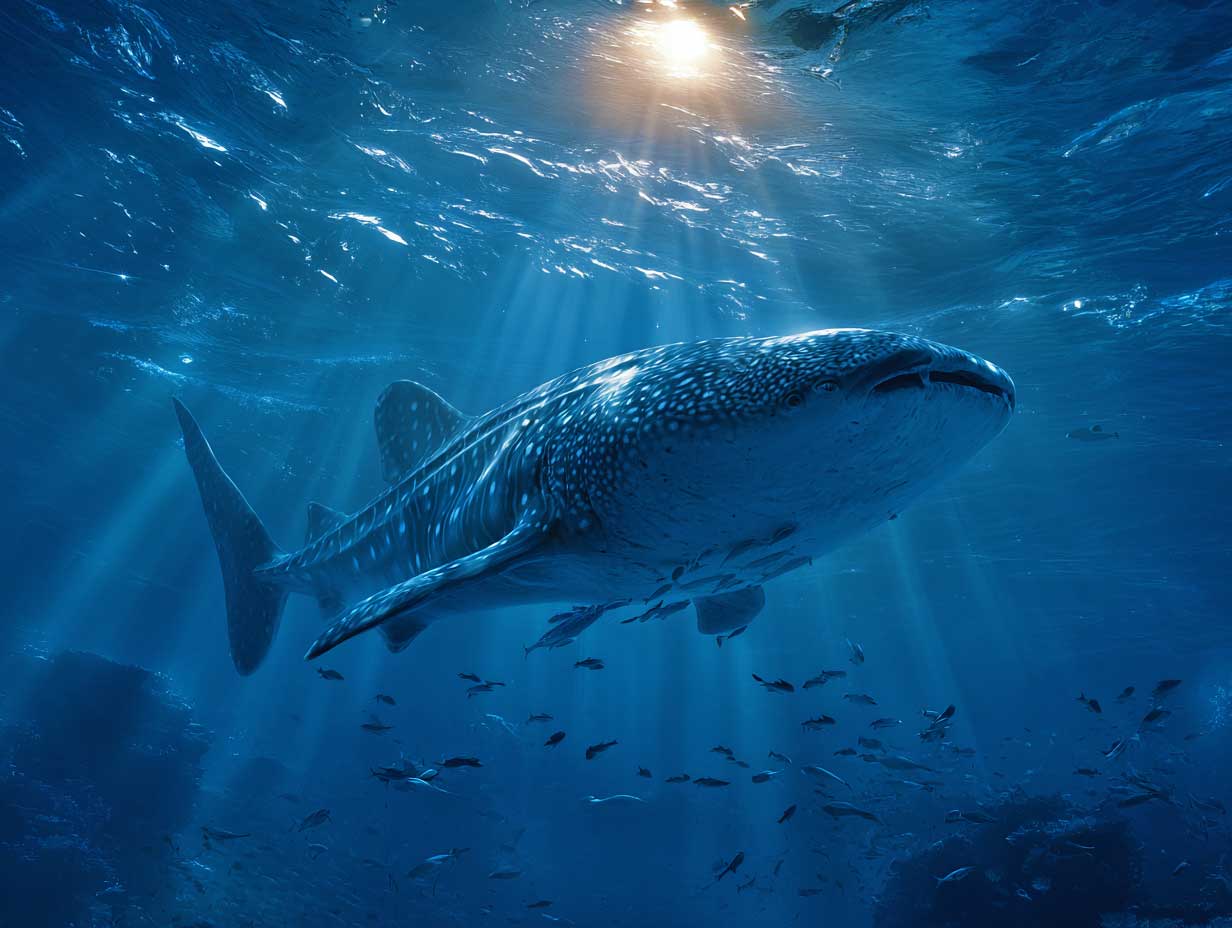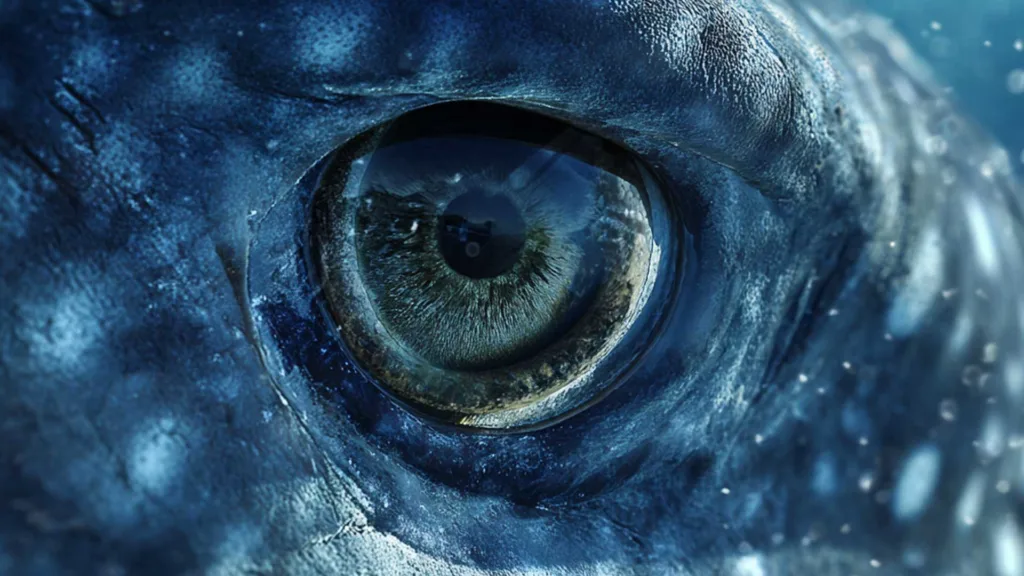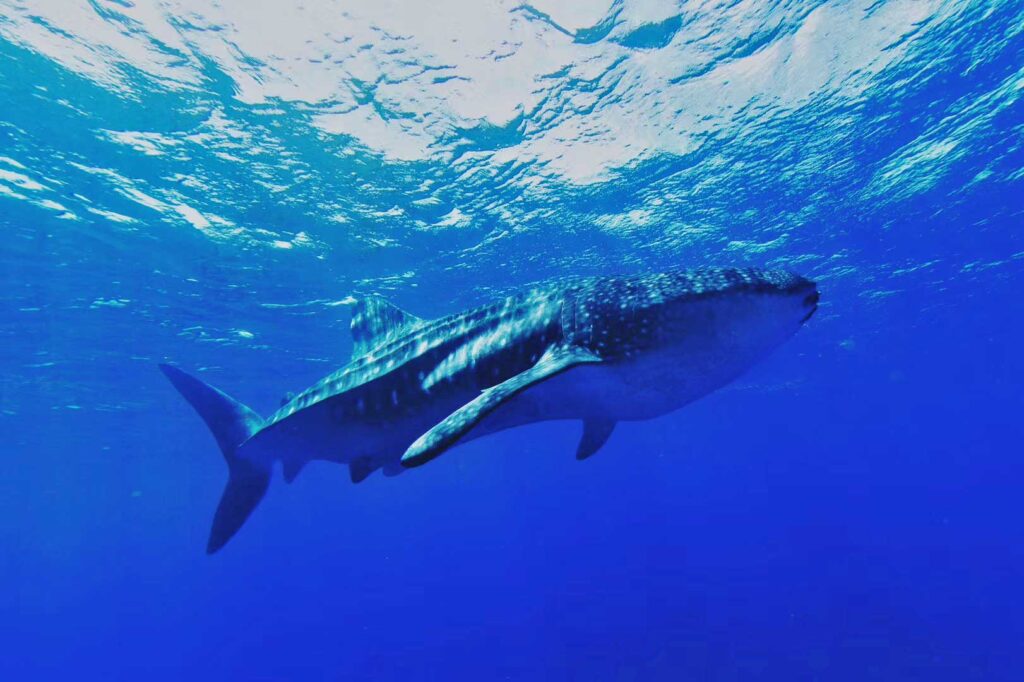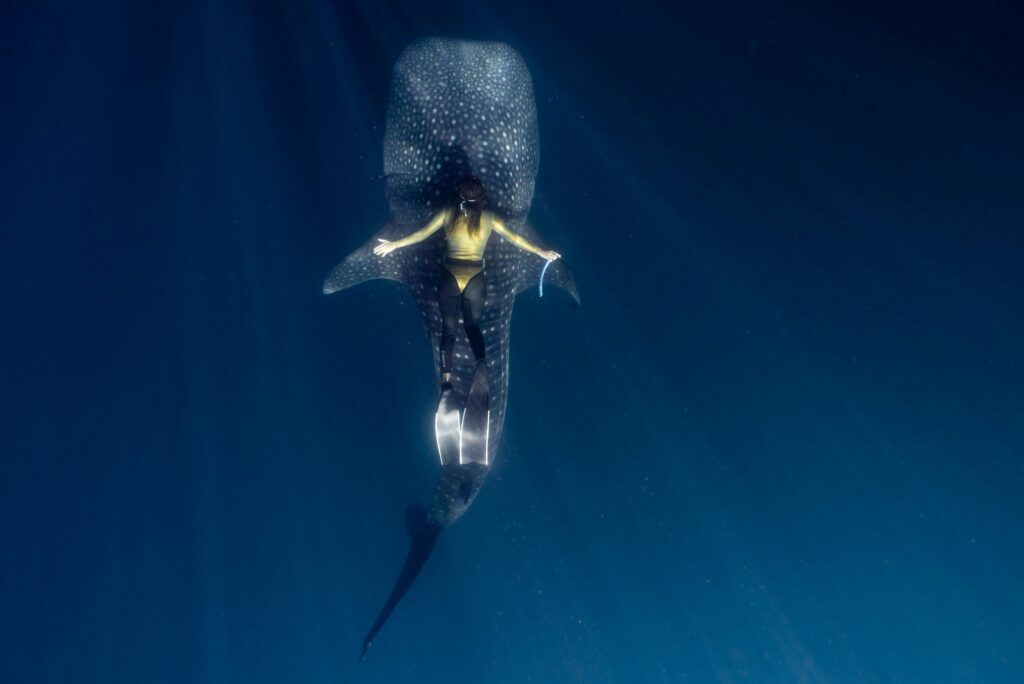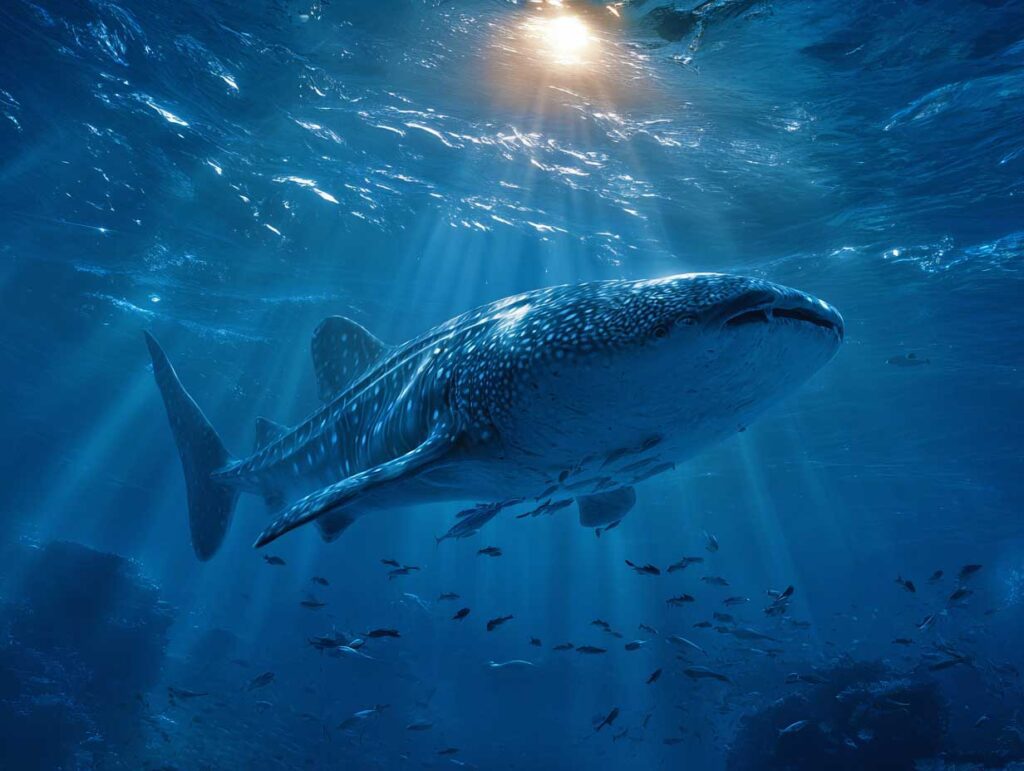
On Earth, the largest fish is the whale shark, Rhincodon typus. From the Gulf of Siam, the largest whale shark record is over 59 feet (Smith, 1925). However, actual measurements were not taken on this specimen. The actual measurement recorded from the Seychelles Islands by Wright (1870) measured 45 feet (Silas, n.d). And the smallest recorded was 3.15 m in Indian coastal waters. According to Shri Ali Manikfan, a former employee of the Central Marine Fisheries Research Institute from Minicoy Island in the Lakshadweep Archipelago, he has witnessed whale sharks being captured there at least three times, but none of the animals were longer than eight feet.
Their occurrence is rare. Some studies indicate that individuals in Indian coastal waters are more likely to be between four and nine meters in length. Ali Manikfan says that in oceanic waters you might find early juvenile whale sharks.
A study on whale sharks in the Maldives was carried out by the Maldives Whale Shark Research Programme (MWSRP). 4500 photos of 354 individual shark sightings were collected by the programme. The juveniles in certain aggregation sites range in length from 4 to 7 metres.
Whale sharks were estimated to be 5.70 meters in length in the vicinity of the South Ari Atoll Marine Protected Area (S.A.MPA), a value that is nearly identical to that of all other regions in the Maldives. The range was 2.5m to 8m. The average length of the tape-measured whale sharks was 6.11 metres, with a range of 4.2 to 7.6 metres.
Off the coast of Huvadhoo, MWSRP also discovered a small whale shark that was about a metre long. No possible locations for pupping could be predicted.
The program discovered that the average whale shark’s length across all Maldivian regions was 5.69 meters. For the 479 whale sharks they saw, this was the conclusion.
This number closely resembles the 2016 conclusion, which determined that the length (BFN) was 5.58 metres. The fish length-weight relationship is referred to as BFN. It was discovered to be 5.55 m in the 2015 season as well. Accordingly, 2 m is the minimum size and 10 m is the maximum (Rees, Hancock, 2018).
